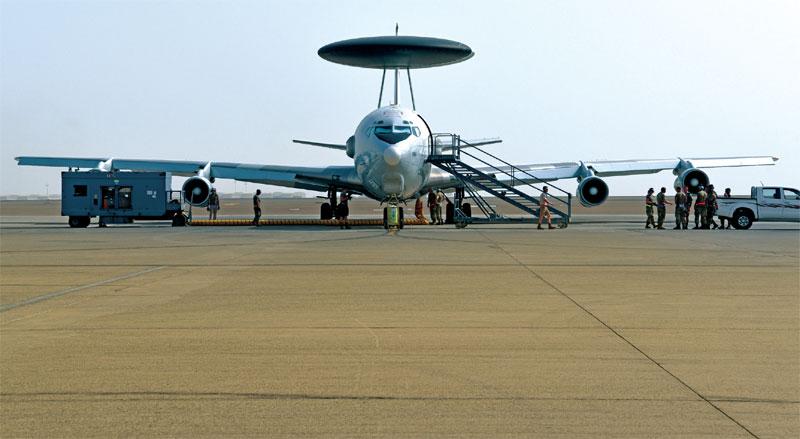IAF’s Critical Deficiency
Atul Chandra
Airborne Warning and Control System (AWACS) and Airborne Early Warning and Control System (AEW&C) aircraft are of vital importance in the modern battlefield. While modern fighter aircraft have advanced radars with improved detection range, they still have limited range as compared to AWACS/ AEW&C aircraft. Today’s highly sophisticated AWACS/ AEW&C aircraft can provide the combat pilot with better battlefield awareness which enhances their mission effectiveness.

E-3 Sentry Airborne Warning and Control System aircraft
The USAF’s legacy E-3 AWACS aircraft for example, with its distinct rotating radar dome has a detection range of over 400 km. According to the Royal Australian Air Force (RAAF), its E-7A Wedgetail AWACS can cover more than four million square kilometres, an area the size of Western Australia or the Northern Territory during a standard mission.
Delayed Vision
The Indian Air Force (IAF) at present appears to be stuck in a limbo with regards to its AWACS/ AEW&C plans, but the advanced militaries of the world are already working on the next-generation of these advanced airborne command posts. The IAF presently operates three Israeli Phalcon AWACS platforms along with two DRDO ‘Netra’ AEW&C aircraft. A third Netra aircraft is slated for delivery to the IAF later this year.
In comparison, the Pakistan Air Force (PAF) has a sizeable AEW&C fleet estimated at five Saab Erieye AEW&C aircraft along with four Chinese ZDK03 Karakoram Eagle AWACS aircraft, which are integrated into the PAF’s Command & Control Ground Environment. The IAF will also need to cater to China’s large AWACS/AEW&C fleet and the need for the IAF’s own
Subscribe To Force
Fuel Fearless Journalism with Your Yearly Subscription
SUBSCRIBE NOW
We don’t tell you how to do your job…
But we put the environment in which you do your job in perspective, so that when you step out you do so with the complete picture.







